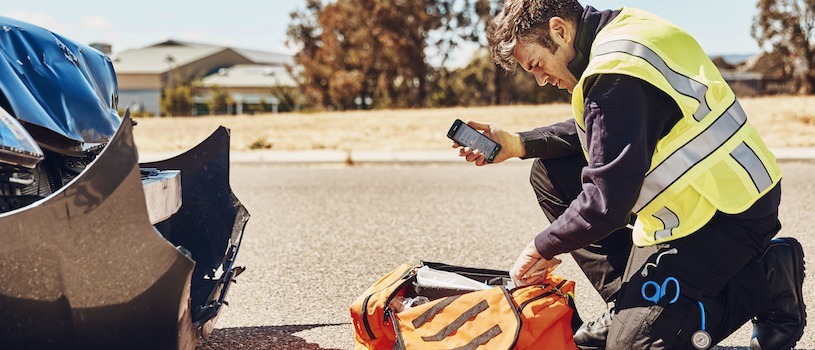In the public safety sector, mission-critical communications must get through, as the information is not only important to the first responders, but in the case of Emergency Medical Services (EMS), it’s critical to the patient. Access to medical records, drug allergies or previous medical history all help paramedics make the best choices for patient care.
While many smartphones now feature IP68 certification, indicating a level of protection against water and dust, most are still vulnerable to drops. IT decision-makers should carefully evaluate their options, including both protective cases and new rugged devices that could prove a more cost-effective and reliable choice in the long-run.
EMS agencies have embraced the use of hand-held and wrist-worn devices, including smartphones, tablets and smartwatches in the field. Through the use of mobile technology, both the worker and the patient have benefited, with optimized medical treatment software like Pulsara offering real-time communications across various healthcare providers. Many EMS workers carry not only their personal smartphone while on duty, but a work device as well. But with the functionality of Samsung Knox, they can use just one device for everything, while maintaining data separation between their work and personal life.
Evaluating Rugged Devices
As with any technology in public safety, decision-makers must look at the users’ duty cycle and its operating environment. EMS responders could be called to a scene in all types of weather conditions and must perform their job outside, regardless of surroundings.
Mobilizing Law Enforcement
Plan and implement a mobile initiative at your agency with this practical roadmap. Download Now
Dust, heat, water and drops are all hazards to portable electronics, so making devices more resistant to these factors is essential, not only for the EMS staff on the front lines, but for the back-end support staff trying to keep devices operational. When looking at smartphones, there are three options in the market today: phones with no IP rating, IP-rated devices that offer protection from water and dust, and those that are both IP-rated and tested against MIL spec standards.
The device’s Ingress Protection Rating (IP) is a standard set forth by the International Electrotechnical Commission (IEC) and designed as a system for classifying the degrees of protection provided by the enclosures of electrical equipment. The two most common ratings for business devices are IP67 certified and IP68 certified. The first rating code ranges from 0 to 6 and represents the degree of protection against foreign solid objects, such as dust. The second ranges from 0 to 8 and represents the degree of protection against moisture.
MIL spec, in particular MIL-STD-810G, indicates a device has been tested against an array of additional environmental conditions, including drops, vibrations, and shocks to extreme temperatures.
The Galaxy S8 Active, for example, is tested against 21 environmental conditions to meet the MIL-STD-810G specification, including drops of up to five feet on a flat surface. Its projected bumper protects against shock and abrasion, while the flat display with protective metal frame resists twisting and tilting. The rugged, tough-textured back cover also makes gripping easier when on the move.
As EMS agencies look at the devices out in the market today, they must be careful to understand these ratings to make an educated decision. Combining state-of-the-art security with MIL spec and IP68 certifications, rugged devices like the Galaxy S8 Active are providing more choices for the public safety community by ensuring that paramedics and medical personnel in the field are always connected to the right information when it’s needed.
See what other capabilities come standard with the Galaxy S8 Active.








